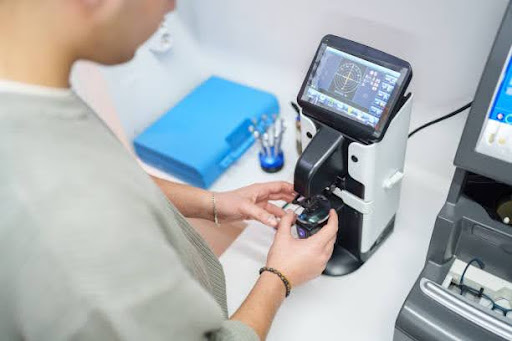Drug Gene Interaction Database: Unlocking Personalized Medicine
Lately, the field of personalized medicine has grown rapidly because of recent progress in genomics and bioinformatics. At the heart of this transformation lies a powerful tool known as the drug gene interaction database. This resource is changing the way healthcare teams treat patients, making it possible to tailor each drug therapy to a person’s genes.
Understanding What Drug-Gene Interactions Are
Drug-gene interactions mean that a person’s genetic information can cause them to react differently to drugs. Such interactions change how the body metabolizes drugs, how well they work and their likelihood of causing unpleasant side effects. As an illustration, some people taking the same dose of a drug can have very different reactions thanks to differences in particular genes responsible for breaking down that drug. Recognizing these gene changes allows healthcare providers to prescribe the right drugs that work better and create fewer side effects.
The Role of a Drug Gene Interaction Database
A drug gene interaction database serves as a centralized, curated platform that collects, organizes, and provides access to detailed information about known genetic variants and their impact on drug response. Such databases merge outputs from released trials, Clinical Practice Guidelines, databases for use of pharmacogenetics and real-world evidence to aide clinical decisions. If medical records and support systems are combined with this data, caregivers are able to get personalized information directly at the time of care.
The information stored in these databases often lists gene-drug matches, genetic variations, the outcomes for patients and recommended therapies. A number of resources include a way to rate how thoroughly the interaction was examined by researchers. It gives both researchers and clinicians a quick way to see how each interaction affects patients.
Using Genetic Material to Drive Precision Medicine
The goal of personalized medicine or precision medicine, is to break away from the standard “one-size-fits-all” healthcare approach. Instead of considering the average, it pays attention to how differently people’s genes, environment and lifestyle affect them. The drug gene interaction database plays a pivotal role in this paradigm shift by providing the genomic data needed to make informed treatment choices.
With the integration of genomic testing in clinical practice, a patient’s genetic information can be cross-referenced with a drug gene interaction database to identify suitable medications or avoid those likely to cause harm. In oncology, psychiatry, cardiology and infectious diseases, this strategy is helpful since how people respond to drugs can differ a lot from one another.
Raising Drug Safety and Efficacy

Adverse drug reactions are one of the main reasons for hospital admissions and complications today. Preventing many of these reactions may be possible with the information we get from pharmacogenomics. The use of a drug gene interaction database enables early identification of potential risks by highlighting genetic variants associated with poor drug metabolism or hypersensitivity.
For instance, some people with specific changes in their HLA genes react very badly to particular antiretroviral or anti-epileptic drugs. Using the database as a reference, doctors reduce the chance of serious medical complications. Too, using genetic information to change a dose can prevent drug levels from becoming too high, increasing the overall effectiveness of the drug therapy.
Integration with how care is delivered and clinical data is used
Using the power of pharmacogenomics requires it to be incorporated into how doctors and patients interact. Leading drug gene interaction databases offer APIs and interoperability features that allow seamless embedding within hospital information systems, laboratory software, and electronic health records (EHRs). Thanks to the integration, genetic information is available for prescription purposes right away.
What’s more, new developments in machine learning and artificial intelligence help make accurate predictions using large-scale genetic and medicine data. A number of platforms now provide risk scores, treatment optimization tools and benefits of drug repositioning based on knowledge of drug-gene relations.
Working toward Better Medical Research

Beyond clinical applications, drug gene interaction databases also support scientific research and pharmaceutical innovation. They are able to study new links between genes and medications, recognize markers that predict drug reactions and estimate possible off-target effects as drugs are developed.
Reviewing patterns within the database allows scientists to propose additional studies or transform present drugs for different disease indications connected through common genetic pathways. The process is quicker and more likely to lead to therapies that are even safer and more effective.
Click here to learn more about Publicly Accessible Resources and Open Science.
Several drug gene interaction databases are publicly accessible, promoting transparency and collaboration in the scientific community. These groups of resources from PharmGKB, DGIdb and CPIC are particularly valuable to clinicians, researchers and teachers.
On these open-access websites, experts in this field team up and create consistent guidelines for pharmacogenomics worldwide. They contribute to making sure healthcare professionals and the community know why genetic variation affects drugs.
What Personalized Medicine Looks Like When Drug Gene Databases Are Involved
As genomic sequencing becomes affordable and popular, data in this field continues to increase rapidly. Future advancements in the drug gene interaction database field will likely focus on enhancing data accuracy, integrating real-world evidence, and expanding coverage to include diverse populations and multi-gene interactions.
Development and use of these databases will be strongly influenced by what is ethical, like ensuring data is kept confidential and all consents are informed. Fair access to genomic data and removing all bias from it will be necessary to reach the full goals of personalized medicine.
Concluding: Making Genomics Work for Therapeutic Progress
The drug gene interaction database is more than just a repository of data—it is a critical bridge between genomic science and therapeutic innovation. These databases help support the right medical care for people, make medical care safer and boost research initiatives, all adding to improved medical care in the future.
As our understanding of human genetics deepens, and as integration with clinical technologies becomes more seamless, the impact of drug gene interaction databases will only continue to grow. These databases are key to healthcare’s new emphasis on providing individualized care effectively.









